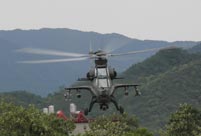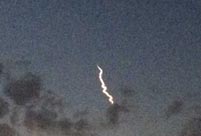

Key Challenges
By promoting agenda of “global maritime nexus”, Indonesia has broadened her playing field and priorities of foreign policy from traditionally focused on Pacific Ocean to also include Indian Ocean. Despite strong historical bonds such as founding the Bandung Conference and Non-Aligned Movement, Indonesia had been relatively disinterested with Indian Ocean. The focus had been on the Pacific sphere, primarily through ASEAN mechanisms and bilateral relations with major and emerging powers such as the U.S., China, Japan, South Korea, and Australia. However, the proposed agenda has indicated Indonesia interests to increasingly “look west”, in terms of increasing involvement in Indian Ocean. Consequently, it would attract many challenges, yet also providing more opportunities to be reaped by Indonesia.
There are at least two main challenges coming from domestic and the region. Internally, readiness would be the main issue. There are two aspects of readiness: the ability to secure the sea from criminal activities and people’s readiness to open the sea toward international community. The ocean “toll road” project will certainly foster fast and secure flow of goods and services. However, other than the lack of infrastructure, this project will also attract criminal activities that demand Indonesia to enhance her maritime security capabilities. The ambitions to become global maritime nexus would also require Indonesia to create a system that links domestic and international routes. As the international flow of goods and services increase, Indonesians would be more exposed toward free competition, and the government must craft strategy to boost competitiveness of her local trade.
Domestically, Indonesia political landscape has been experiencing the new normal, where the opposition (Koalisi Merah Putih/KMP) is very strong, Jokowi as president has a very weak control over the PDI-P, and Indonesia public is also divided and increasingly demanding. Thus, domestically Jokowi will have to gain public confidence over him and manage big forces coming from the KMP, especially from the parliament. This could dilute his international attention into more domestic. It also potential to detract some of the policy measures required, especially to be passed in the parliament.
In terms of developing maritime infrastructure, Jokowi is set to build 24 new sea ports in Indonesia's major islands in the next five years and has allocated Rp60 trillion from the State Budget. Jokowi also has prioritized his foreign policy mission to find investment sources that are
willing to work on enhancing Indonesia's infrastructure. The development of new sea ports and maritime services which include vessels, warehouses and maritime industry are crucial in realizing the vision. However, the corruption, especially in the province and regional level, is potential to detract or diminish the qualities of the project. Therefore, it is also important to prepare adequate monitoring system, which is related to procurement of new seaport facilities, sea transportation regulation, and development of monitoring tools.
Indonesia is also confronted by challenges from both of the Indian and Pacific Ocean.
In Pacific, the lingering dispute on South China Sea has caused concern on ASEAN strategic autonomy. In 2012, failure to agree on a communiqué of disputes surrounding the South China Sea under Cambodia’s chairmanship had been a heavy blow to the integrity of ASEAN’s cohesiveness. Indonesia concerns the conflict would escalate into open war that could give major impact on the whole region stability. Thus, Indonesia would use any means possible to keep “the talk” continue to hinder misperception and hopefully able to produce some kind of rule or code of conduct (CoC) between the claimants. Jokowi administration would intensify many efforts that Indonesia had done, such as active diplomacy efforts in 2012, where Indonesia trying to negotiate the draft CoC as an effort to consolidate ASEAN position.
The major powers peaceful relation is also important prerequisite for the success of Indonesia’s vision. By 2020 the U.S. will shift 60 per cent of her naval assets to Pacific; and also has been formulating the Air Sea Battle Strategy (ASB) to respond toward China Anti Access/Area Denial (A2AD) capability. Although the U.S. posture has always incorporated peaceful-collaborative gesture with China and ASB strategy has been kept ambiguous, however, the deterioration of relations between two Great Powers will give strong impact toward the whole region.
Similarly, with many major powers increasingly interested in Indian Ocean, the struggle of interest for political influence and resources bring another dimension challenge. For the U.S. Indian Ocean is important to support her interest in Middle East. For China, it is important to support her energy needs. China has just obtained right to explore mineral resources in Western part of Indian Ocean; and declaring Indian Ocean as Silk Road for energy transportation from Middle East and Africa. The rise of India as the next economic power, and the development of BRIC Cable in Indian Ocean has also become evident of Indian Ocean as the next venue of great power competitions.
Although regionalism in the Pacific has seen some advancement, however, the weak security regime at sea in Pacific and Indian Ocean is also important impediment to be addressed. ASEAN +3 countries and Indian Ocean countries (India, Bangladesh, and Sri Lanka) have implemented the Regional Agreement on Combating Piracy and Armed Robbery against Ships in Asia in responding to the high impact of terrorism at sea amongst. Several joint maritime exercises had also been conducted, such as US-Thai Cobra Gold joint exercises or maritime military exercise between the U.S., Australia, and Japan in the South China Sea off the coast of Brunei in July 2011. However, most of the security regime has been highly criticized for being very weak on solving issues. Similarly in Indian Ocean, although there have been many sub regional cooperation such as South Asian Association for Regional Cooperation (SAARC), African Union (AU), and Arab League, however, it is important to connect and intensify the cooperation between these regional groupings. Compare to APEC that had 182 meetings in 2013, Indian Ocean Rim Association (IORA) only held 34 meetings, which indicates a lot of room to grow.
 |  |
 PLA soldiers operating vehicle-mounted guns in drill
PLA soldiers operating vehicle-mounted guns in drill Beauties dancing on the rings
Beauties dancing on the rings Blind carpenter in E China's Jiangxi
Blind carpenter in E China's Jiangxi Top 10 highest-paid sports teams in the world
Top 10 highest-paid sports teams in the world In photos: China's WZ-10 armed helicopters
In photos: China's WZ-10 armed helicopters UFO spotted in several places in China
UFO spotted in several places in China Certificates of land title of Qing Dynasty and Republic of China
Certificates of land title of Qing Dynasty and Republic of China  Cute young Taoist priest in Beijing
Cute young Taoist priest in Beijing New film brings Doraemon's life story to China in 3D
New film brings Doraemon's life story to China in 3D China-S.Korea FTA sets positive precedent
China-S.Korea FTA sets positive precedent Ferry carrying 458 people sinks in Yangtze River
Ferry carrying 458 people sinks in Yangtze River Mecca of Marxism
Mecca of Marxism Bring them home
Bring them homeDay|Week